Grackles are of the Icterid family, the New World family of birds that includes blackbirds, orioles, oropendolas, meadowlarks, caciques, the Bobolink, and cowbirds. The word grackle derives from the latin word graculus*, which describes the small European corvid, the Jackdaw, which some grackles vaguely resemble. There are eleven species of grackle, or, there were, but the Slender-billed Grackle Quiscalus palustris went extinct in 1911, leaving ten extant species today. Six of the remaining species are also in the genus Quiscalus, two are in Macroagelaius, and two species, the Red-bellied Grackle Hypopyrrhus pyrohypogaster and the Velvet-fronted Grackle Lampropsar tanagrinus, are in monotypic genuses genera.
Let us start first with the three species of grackle that inhabit the United States, the Common Grackle Quiscalus quiscula, the Boat-tailed Grackle Quiscalus major, and the Great-tailed Grackle Quiscalus mexicanus. The Common Grackle is, not surprisingly, common across its range, which encompasses the eastern United States and eastern Canada. Males and females are largely alike, though females are a bit smaller and less iridescent. Common Grackles nest in forests, sometimes colonially, and can be found across a variety of habitats in winter when they flock in large numbers. They are sometimes considered pests by farmers because the large flocks can decimate grain crops. This might help explain why flocks of grackles are referred to as a “plague,” though even that beats being “an ornithological debacle.”
Common Grackle, Central Park, New York City
The Boat-tailed Grackle is a coastal bird that ranges from the states that border the Gulf of Mexico all the way up into Connecticut, with rare sightings in Rhode Island and Massachusetts. It is found in saltmarshes and is almost never found inland, except in Florida. The male Boat-tailed Grackle is similar to the male Common Grackle but larger in size, especially in the tail for which it is named, while the female is smaller than the male and is pleasingly dressed in brown and buff. Boat-tailed Grackles were lumped with Great-tailed Grackles in 1910 and only split in 1983.
Great-tailed Grackle, Lago de Yojoa, Honduras
The Great-tailed Grackle is common from northern South America to the middle of the United States and west to California. Its range is expanding rapidly to the northwest where it has almost reached Oregon and to the northeast where it has nearly reached the Great Lakes. It is slightly larger than the Boat-tailed Grackle but otherwise similar, though it seems more confiding than its close cousin and often allows close approach. Perhaps this is because the Great-tailed Grackle is more willing to be a habitat generalist, rather than being tied to coastal saltmarsh like the Boat-tailed Grackle, and thus comes into close contact with humans more often.

Carib Grackle, Aripo Savannah, Trinidad (photo by Mike)
The other Quiscalus grackles include the Nicaraguan Grackle Q. nicaraguensis, which is endemic to the area around Lake Nicaragua in both Nicaragua and Costa Rica. It makes some pretty neat sounds which are well captured here. The Greater Antillean Grackle Q. niger is found, not surprisingly, in the Greater Antilles, and is known on various islands as Cling-cling, Chango, and Chinchilín. Carib Grackles Q. lugubris are apparently well-known for looking for handouts in open-air tourist restaurants across their range in the lesser Antilles and northern South America. And, of course, there is, or rather, there was, the extinct Slender-billed Grackle Q. palustris which had been endemic to marshes near Mexico City.
Greater Antillean Grackle, Hotel Mocking Bird Hill, Port Antonio, Jamaica (photo by Mike)
The two Macroagelaius grackles are the Golden-tufted Grackle M. imthurni, sometimes called the Golden-tufted Mountain-Grackle, of Brazil, Guyana, and Venezuela, and the Mountain Grackle M. subalaris, sometimes called the Colombian Mountain-Grackle, which is endemic to the eastern slope of the northern Andes in Colombia. It is difficult to find much info on the Golden-tufted Grackle: its Wikipedia page is a stub, its entry in Neotropical Birds hasn’t even been started, there is very little info on InfoNatura, and at least some videos purportedly of the bird are actually of other species. I did, however, find some sound clips. The Mountain Grackle is endangered, mostly due to habitat loss, and little-studied, though a relatively recent paper indicates that it breeds colonially (link is a PDF). Interestingly, at least one effort to preserve the Cerulean Warbler Dendroica cerulea helps the Mountain Grackle: a reserve on the warbler’s wintering grounds also hosts a population of the endangered grackle!
The Red-bellied Grackle Hypopyrrhus pyrohypogaster is, like the Mountain Grackle, endemic to Colombia and endangered. BirdLife International lists habitat loss in the Andean ranges of Colombia as the main threat to the survival of the species. The Velvet-fronted Grackle Lampropsar tanagrinus, also known as Violaceous Grackle and Bolivian Grackle (though these names may refer to two of the five recognized subspecies), is found in swamps of most of the countries of northern South America.
So get out there and check out those grackles! You won’t regret seeing such gorgeous birds, even if they haven’t gotten the best press.
Common Grackle, Central Park, New York City
*After getting Rick’s comment below about the word graculus (gracula) I dug around some more and realized that maybe a better explanation of graculus is “a latin word used to describe a variety of black(ish) birds.”

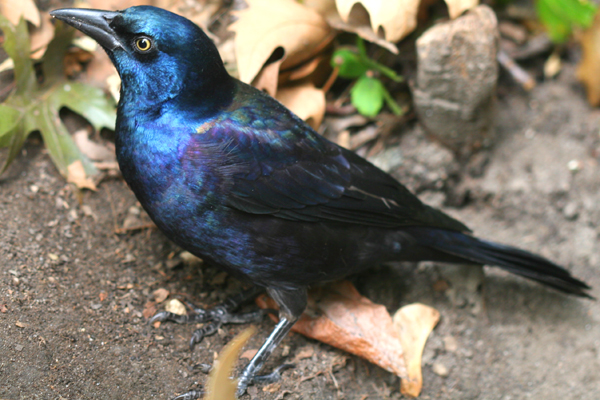
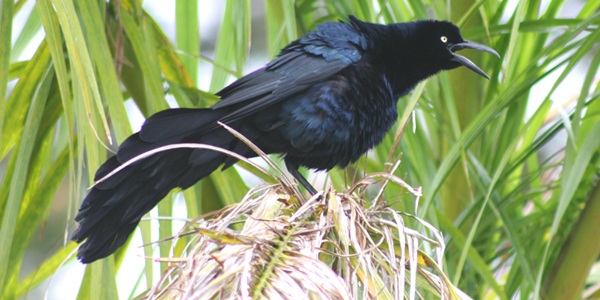
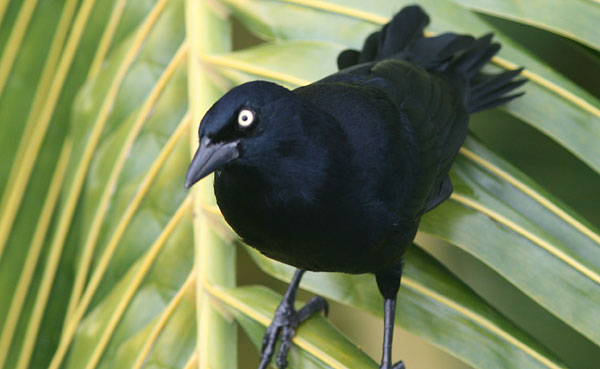
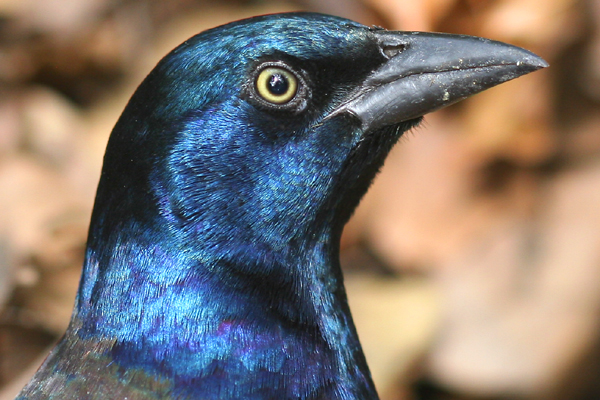




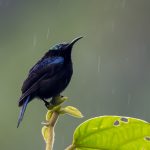

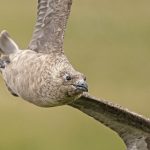

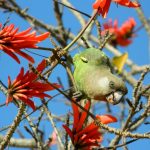
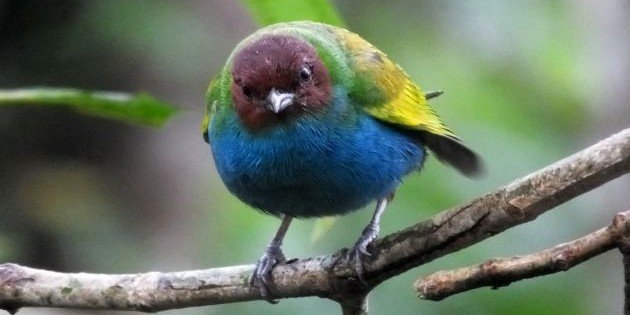
Oh, a long and lovely (and as it is about grackles, also dark and deep) post. Clearly D&D are still at the hospital.
This post might go down in history as your last long and comprehensive text with no typos or style goof-ups.
Har har har.
But Desi will be worth it, man. Yes, he will. Cheers!
Ah, Jochen, but you are wrong. Corey said “genuses”… hehe… its genera. Baby Shearwater is already wearing Corey down 🙂
@Jochen & Nick: Sadly, this post was prewritten…though I have fixed the plural of genus.
By the way, if I manage to stop making such errors, should Desmond and I be referred to as geniuses or geniera? 🙂
The meaning of the Latin “gracula” really isn’t clear. In fact, there is a genus of mynas called Gracula, I think.
Great post!
@Rick: Thanks! And I have added a footnote to clarify the lack of clarity on the definition of gracula.
Excellent write-up, Corey! Grackles unfortunately don’t get the respect they deserve, but they are real treats to watch and hear.
Grackle = Trash Bird.
’nuff said.
@Jason: Thanks!
@Will: Even when they are bird #100 on the Montezuma Muckrace?
@Nick: my son just entered the “terrible twos”, which should make clear why I missed Corey’s mistake… (Corey, don’t google the term or you’ll run for the forests to not return until Desi is 18 years old)
@ Jason: agreed.
@Will: location, location, location! There are places on the globe where Ivory Gulls are trash birds. 😉
@Jochen: I would run for the forests but the swamps tempt me more.
Yeah, but everyone knows where to find you there. Searchers just have to follow the blood tracks of injured birders…
Just saw hundreds of Common Grackle at the edge of Forest Park on Metropolitan Avenue in Kew Gardens. I thought they were some sort of blackbird but wasn’t sure which kind. Your post cleared it up for me. Thanks!
@Ourania: I just saw those same birds go by my apartment an hour or so ago. And you’re welcome!
i have a grackle for a pet i have had him for 5 months, he talks in my voice and is so smart,his name is buddy and he is spoiled rotten,